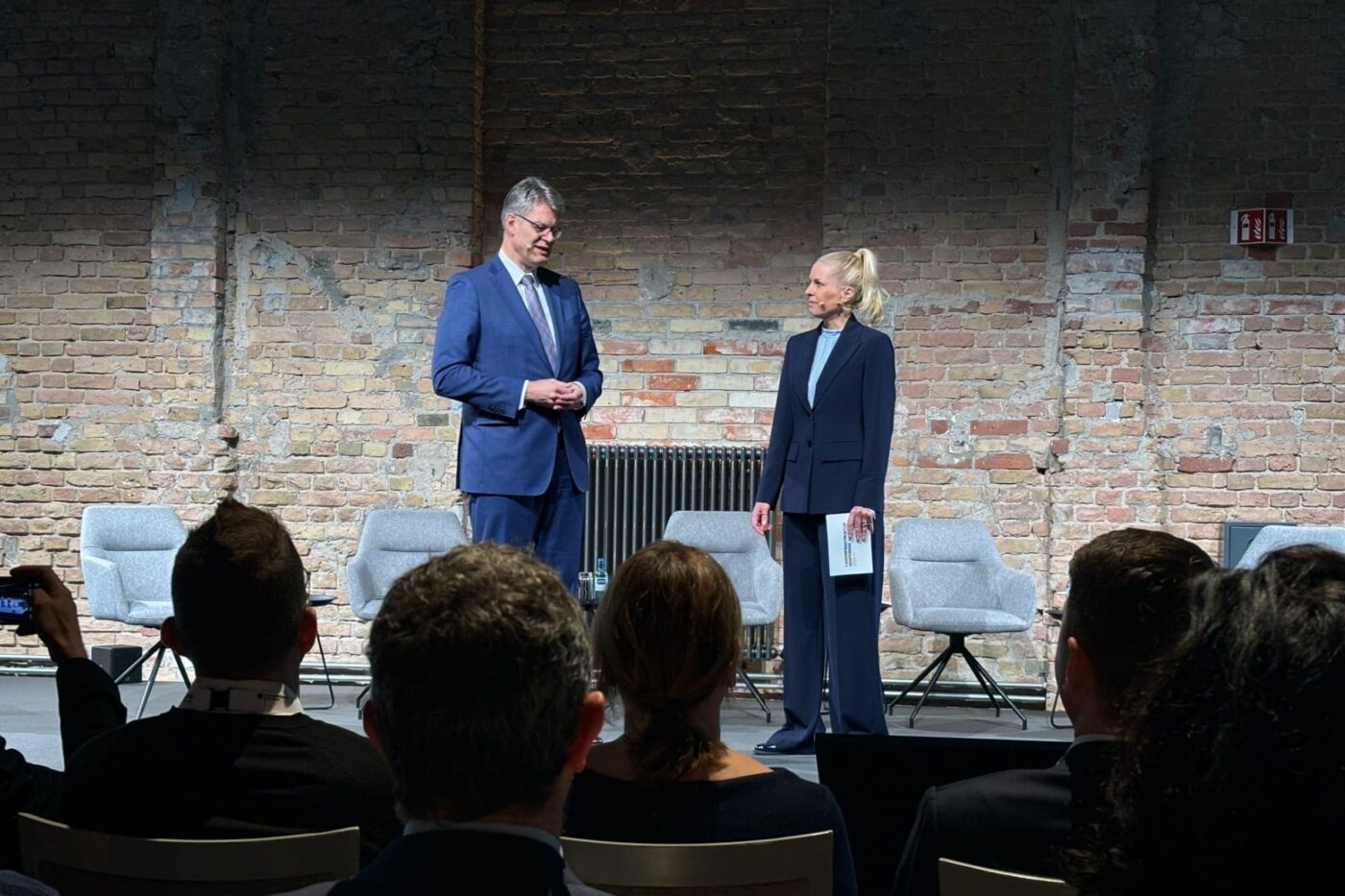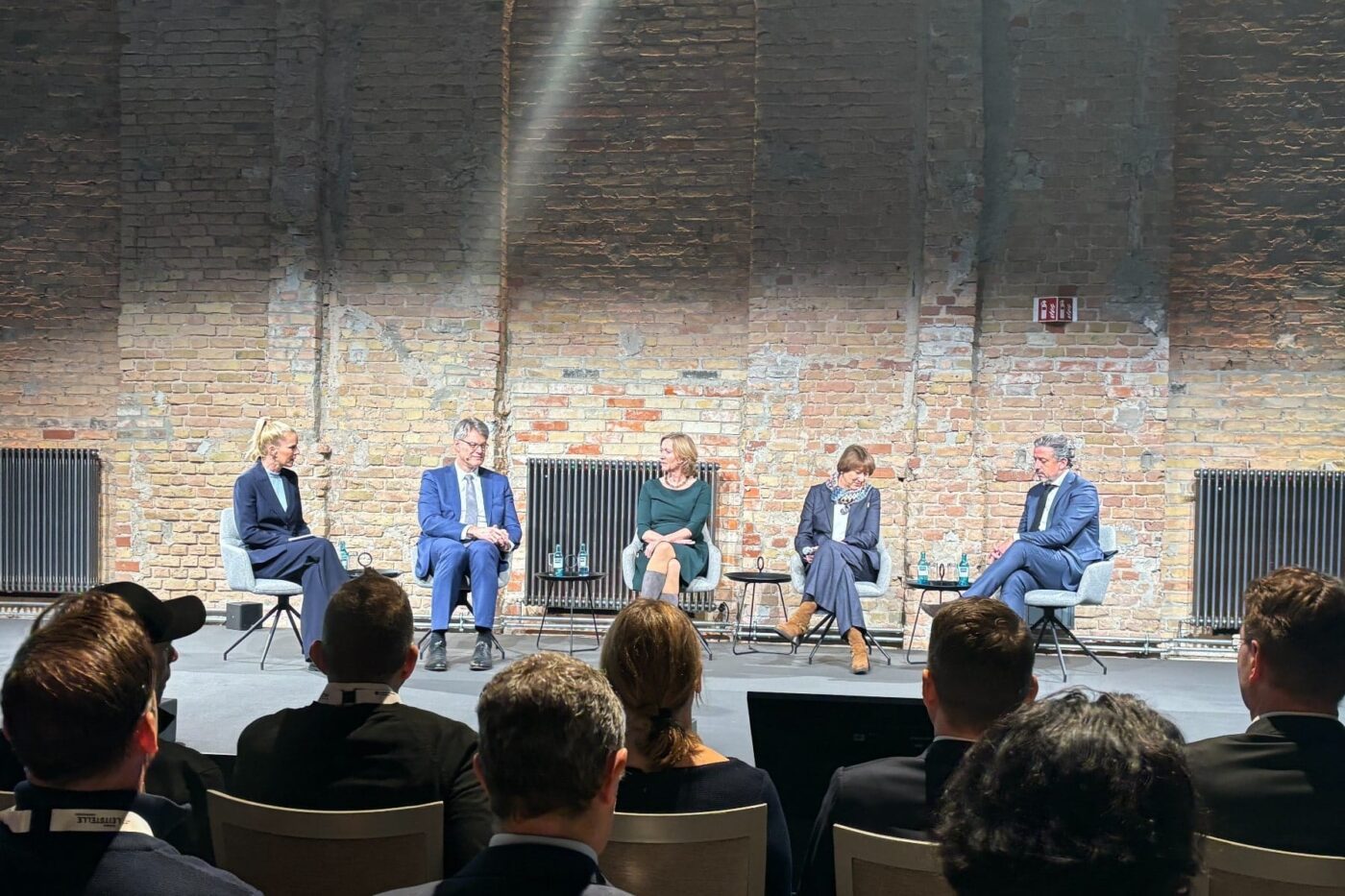LISKON 2025: New charging master plan for Germany
Schnieder’s ministry presented a draft of this master plan in October. The final version was approved by the Federal Cabinet on Wednesday before Schnieder presented the document to the public on Thursday at the Charging Infrastructure Conference (LISKON) organised by NOW GmbH and the National Centre for Charging Infrastructure. The ‘Charging Infrastructure Master Plan 2030’ is intended to form nothing less than “the central strategic framework of the Federal Government for the further expansion of the charging infrastructure in Germany.”
According to the National Centre for Charging Infrastructure, the master plan comprises 41 concrete measures aimed at further improving investment, approval and usage conditions for the development of charging infrastructure. These include strengthening competition in charging services, greater transparency in charging prices and better integration of the charging infrastructure into the electricity grid. In addition, the master plan provides important impetus for innovations such as bidirectional charging, according to the control centre.
As in the draft, the approximately 40 measures in the final document are divided into five areas of action:
- Strengthen demand and investment
- Simplify and accelerate implementation
- Increase competition and price transparency
- Improve integration into the electricity grid
- Increase user-friendliness and innovation.
These are points that have already been known from the draft or even longer, such as the 350 planned electric truck charging parks at 350 unmanaged and managed motorway service areas. Or directly the first measure, which is to increase the “demand for charging current through more electric vehicles,” although this essentially refers to the measures already decided upon in the ‘investment booster’.
The announced new funding programmes for expanding the charging infrastructure have also made it from the draft to the final version. “A key component is the BMV’s new funding programmes for charging infrastructure in multi-unit buildings, depots and commercial depots,” writes the control centre. Details on funding for charging infrastructure in multi-unit buildings are expected to be available in early 2026. “In order to increase the willingness of owners and owners’ associations to invest and to accelerate the development of charging facilities in multi-unit buildings, the BMV will provide financial support for this development, taking into account the costs of upgrading the grid connection and the electrical systems of the buildings,” the ministry announced in the master plan.
Sometime in 2026, more detailed information on funding for depot charging for commercial vehicles is also expected to be available. “Since electrification involves high initial investment costs for charging facilities and, in particular, upgrading grid connections, the BMV is developing effective and efficient support measures that will assist in the installation of charging facilities in depots and on company premises, while also taking into account the costs of upgrading grid connections,” states Measure 4.



All funding subject to financing
The big but: Another very important sentence can also be found in the final version: “The implementation of all financially effective measures in the master plan is dependent on the available budgetary resources.” The individual measures also repeatedly mention that ‘sufficient funding in the 2026 budget’ is a prerequisite for implementation. In other words, the political will is there – but whether the money is available remains to be decided.
Apart from the announced but still provisional subsidy programmes, there are concrete and practical measures that are likely to be significantly cheaper to implement – but cannot be decided on alone. For example, up to now, subsidised charging infrastructure in the non-public sector may only be used by the applicant – i.e. by the vehicles of a company on whose premises the subsidised charging points have been installed. However, it may not be used by customers or suppliers. “The existing European state aid rules in Article 36a(8) of the General Block Exemption Regulation (AGVO) on the multiple use of subsidised non-public charging points should therefore be clarified to the effect that the use of subsidised non-public charging infrastructure by third parties, such as customers or delivery services, is expressly permitted,” states the master plan. “The BMV will advocate for such clarification as part of the revision of the European AGVO.”
Control centre wants to simplify charging tenders for municipalities
Other points are actually entirely in the hands of German politicians. Measure 17 suggests relaxing the reporting requirements for charging infrastructure operators – currently, manual reports of the commissioning and decommissioning of charging points must be submitted to the Federal Network Agency (BNetzA), but this could soon be automated by the ‘national access point’ provided for in the European AFIR. “The BMWE and the BMV are working with the Federal Network Agency (BNetzA) to examine the extent to which data reporting and responsibilities under AFIR and the Charging Station Ordinance (LSV) can be made less bureaucratic,” according to the master plan. The ‘support for local authorities’ in measure 18 can also be implemented by Germany on its own, although this essentially concerns the existing advice and information services provided by the National Centre for Charging Infrastructure for Local Authorities (LISKON). The centre has published new model tenders for LISKON, which are intended to make it easier for local authorities to award contracts for charging infrastructure.
In his speech at LISKON, one of the new Transport Minister’s first major appearances on the subject of charging infrastructure, Schnieder stated that the measures are ‘geared towards the specific needs of people and businesses’. “This should make it easy for customers to find the best deal. We also want to make it easier for the charging industry to adopt attractive products,” said the politician.
According to Schnieder, the first locations for the planned e-truck charging infrastructure on motorways are to go into operation next year at unmanaged rest stops. “As soon as it is legally possible, we will also tackle the other locations at the managed loading facilities,” said the minister. Here, the final ruling in the legal dispute between Fastned and Autobahn GmbH must be awaited. After that, however, things should move as quickly as possible: “The grid connection requests for all locations were already submitted to the responsible regional grid operators last year.”
For many companies that actually want to build charging infrastructure, connecting to the grid is a major hurdle – even in the German network, which is being promoted by the Ministry of Transport itself, as Johannes Pallasch, head of the National Control Centre for Charging Infrastructure, recently stated in an interview with electrive. “We also have to apply for space, and we also have to apply for grid connections with the project. We don’t get any preferential treatment,” said Pallasch about the processes involved in the German network.
In his LISKON speech, Minister Schnieder made it clear. “The energy grid must not become a charging plan for the expansion of digital infrastructure. We can really pick up the pace when it comes to grid connections. There is great potential here to move forward more quickly,” said the Transport Minister. “To this end, we are improving digitisation processes and investing heavily in the standardisation of these procedures. We also want to create more transparency about available grid connection capacities. This saves working hours and money on all sides.”
Data should also help in this regard: with the ‘Car Charging Infrastructure MONITORING’ system, the control centre has introduced a new data dashboard to complement LISKON for the expansion of public charging infrastructure in Germany.
nationale-leitstelle.de, bmv.de (plan as PDF), nationale-leitstelle.de (Monitoring), nationale-leitstelle.de (sample tender), youtube.com (live stream, all sources in German)
This article was first published by Sebastian Schaal for electrive’s German edition.




0 Comments